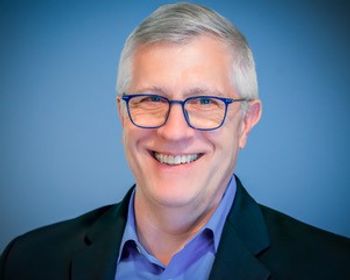
Interoperability is a possibility, and closer than some may think
Industry insiders share their views of how healthcare is moving steadily toward a connected future.
For an idea of the scope of what it takes to make
Despite these numbers, experts at the 2018 Health Information and Management Systems Society (HIMSS) conference say the industry is closing in on making interoperability possible for everyone.
“
IN CASE YOU MISSED IT:
This concept is not theory. The organization already has 25 million patients enrolled and is adding one million more each month. “This is very much a live network,” said Asnaani. CommonWell is also collaborating with other organizations with an interoperability focus, such as the CareQuality Interoperability Framework, which includes EHR vendors like Epic and athenahealth. This collaboration should result in accessibility of records from across those networks by this summer, said Asnaani. Regardless of which network a provider is using, the physician will be able to access patient records from the other.
The confusion for physicians is often where to connect for the best access to patient data, said Asnaani. The recent announcement of a draft of the Trusted Exchange Framework and Common Agreement (TEFCA) by HHS will go a long way toward solving this issue. It will allow various health exchanges to link together and provide the broad access providers have been looking for, he said.
“Doctors can connect to their EHR, which connects to the CommonWell network, which connects to rest of a broader network,” said Asnaani. “Clinicians, patients, or social workers can find the records, get the data they need, and there will be no blind spots because everyone will be connected.”
Small steps forward
While there are still operational issues to work out, Asnaani said that between TEFCA and the promise of aggressive action by CMS against those who data block, he expects to see patient health records continue to become more readily available.
David McCallie, MD, senior vice president for medical informatics for Cerner, said thanks to industry efforts to create common interfaces, such as Fast Healthcare Interoperability Resources (FHIR), healthcare is starting to see cross-platform apps developed. The result means more coordination will be possible among physicians for something like population health management, regardless of which EHR individual physicians are using.
POPULAR ON OUR SITE:
The app will reside within the physician’s EHR, and the user interface will look the same, but the data will be shared with the other physicians managing the population health group-and translated into a format they are used to working with in their EHR. In other words, the same data is presented in different ways with no effort required from the physician.
McCallie said physicians will go from not having enough data to having too much data. And while certain items like labs and vital signs can be automatically reconciled, other issues are more complicated. “What about allergies or problems where different providers think the problem is different things?” he adds.
There are two factors McCallie said will help reduce this data overload, or “note bloat” that plagues current EHRs and will most likely get worse as more data flows in from interoperability: First, CMS said it will rethink the evaluation and management code process because the rules were written in the mid-1990s and are inappropriate for the EHR era; second, machine learning and artificial intelligence can help find the information doctors need when they need it.
“AI can analyze millions of patient records and analyze what doctors are actually touching, and can then go out and look for that data subset,” said McCallie. The result will give physicians the information they need and reduce the time spent searching for relevant information needed for the patient.
Newsletter
Stay informed and empowered with Medical Economics enewsletter, delivering expert insights, financial strategies, practice management tips and technology trends — tailored for today’s physicians.
















